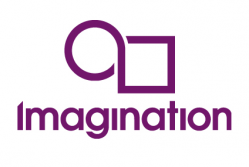Imagination Technologies of the UK has been sold to Canyon-bridge Capital Partners, a private equity fund, for £55 million, a 47.4% premium to the share price on the day before the company was put on sale, in June, but around 35% down on the price that the shares were trading at before it became clear that its biggest customer, Apple, was planning to drop the use of Imagination’s technology. (Imagination Hit by Apple Decision)
Canyon said that it would not change the company’s strategy or management and that it would stay headquartered in the UK. (Canyon has a facility in Palo Alto).
Separately, Imagination has sold its MIPS division, acquired in 2013 for $60 million by Imagination and based in Sunnyvale, California, to Tallwood, a venture capital firm. The company will get $65 million in a move that is seen as ensuring that there is no US interest in the deal which might cause a problem with the US government.
The UK government has said that it will look at the deal, but analysts do not expect a problem as the government has generally welcomed investments and takeovers in recent years.
Analyst Comment
This deal is something of a bounce back for Canyon, which had tried to buy Lattice, the developer of HDMI technology, but was blocked by Donald Trump.
My own knowledge and contact with the company goes back to a time when it was called VideoLogic and it was doing something called ‘multimedia’, which I barely understood at the time. I remember going to visit the company and hearing about its innovative approach to 3D processing.
At the time, most companies were taking the kind of graphics pipelines that were used in big systems from companies such as SGI (remember them?) and throwing transistors at the process, exploiting the advances of Moore’s Law. I’m thinking here of companies such as 3Dfx (remember them?). Imagination took a different approach and divided up the display into tiles and only rendered visible pixels. That meant that less processing power was needed, which was useful, but not a killer feature. Early supporters, in 1994, were NEC, Namco and Diamond Multimedia (remember them?), Sega and Compaq. Later supporters included STMicro and Hitachi and in 2002, we reported that Intel had licensed the PowerVR technology. Others were Samsung, Philips and TI. In a number of cases, companies were using the Imagination alongside an Arm CPU
By 2009, Apple was a significant shareholder, taking a share of 9.5% in the company and Imagination rode the success of Apple’s iPhone. The arrival of smartphones and the demand for 3D graphics in games and other apps meant that Imagination’s advantage in power consumption had become a huge advantage. Then, in the spring, Apple said that it planned to do its own thing in GPUs. The lawyers should do well over the next couple of years as the companies unpick their relationship.
Just looking at our database, we have written 300 (now 301) articles featuring the term ‘PowerVR’ since 1994. This deal should ensure that we can continue to add to this total! (BR)

